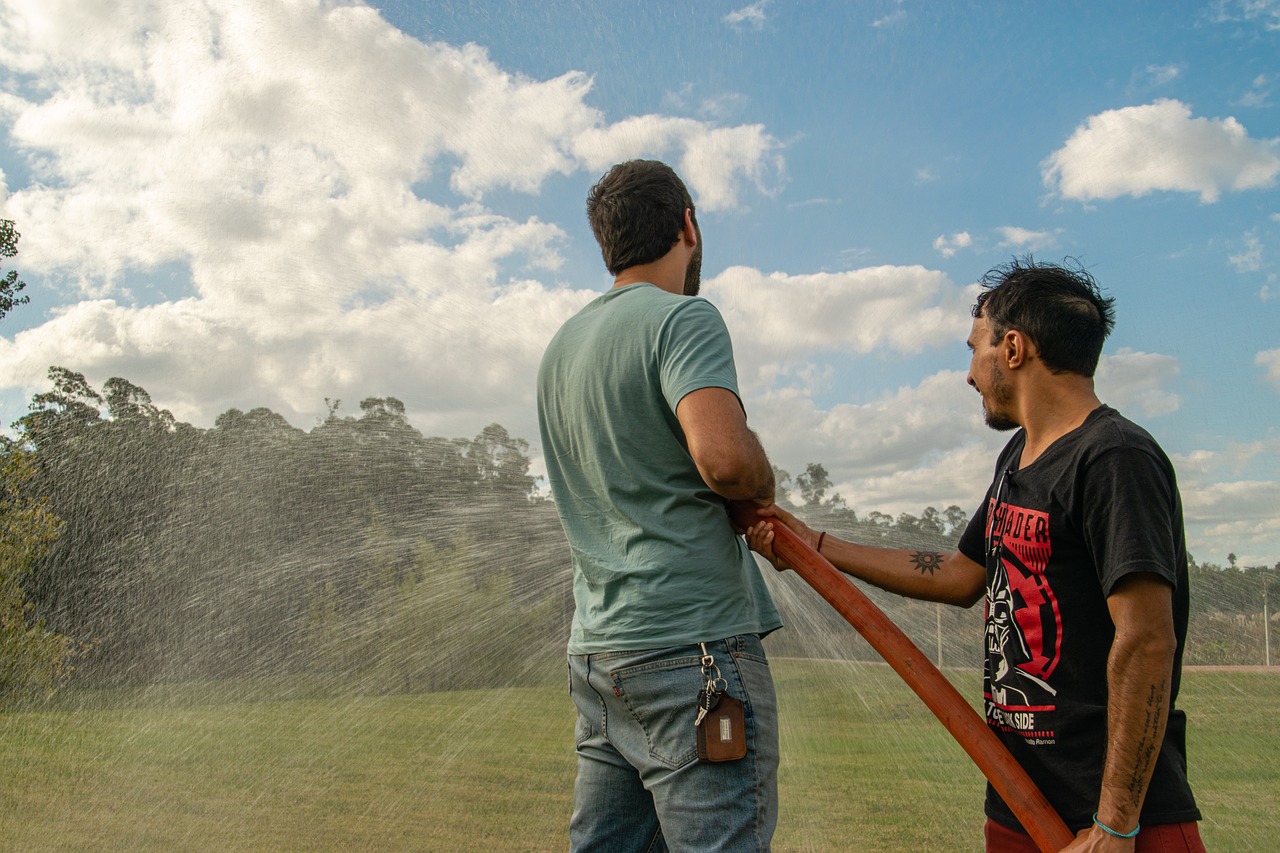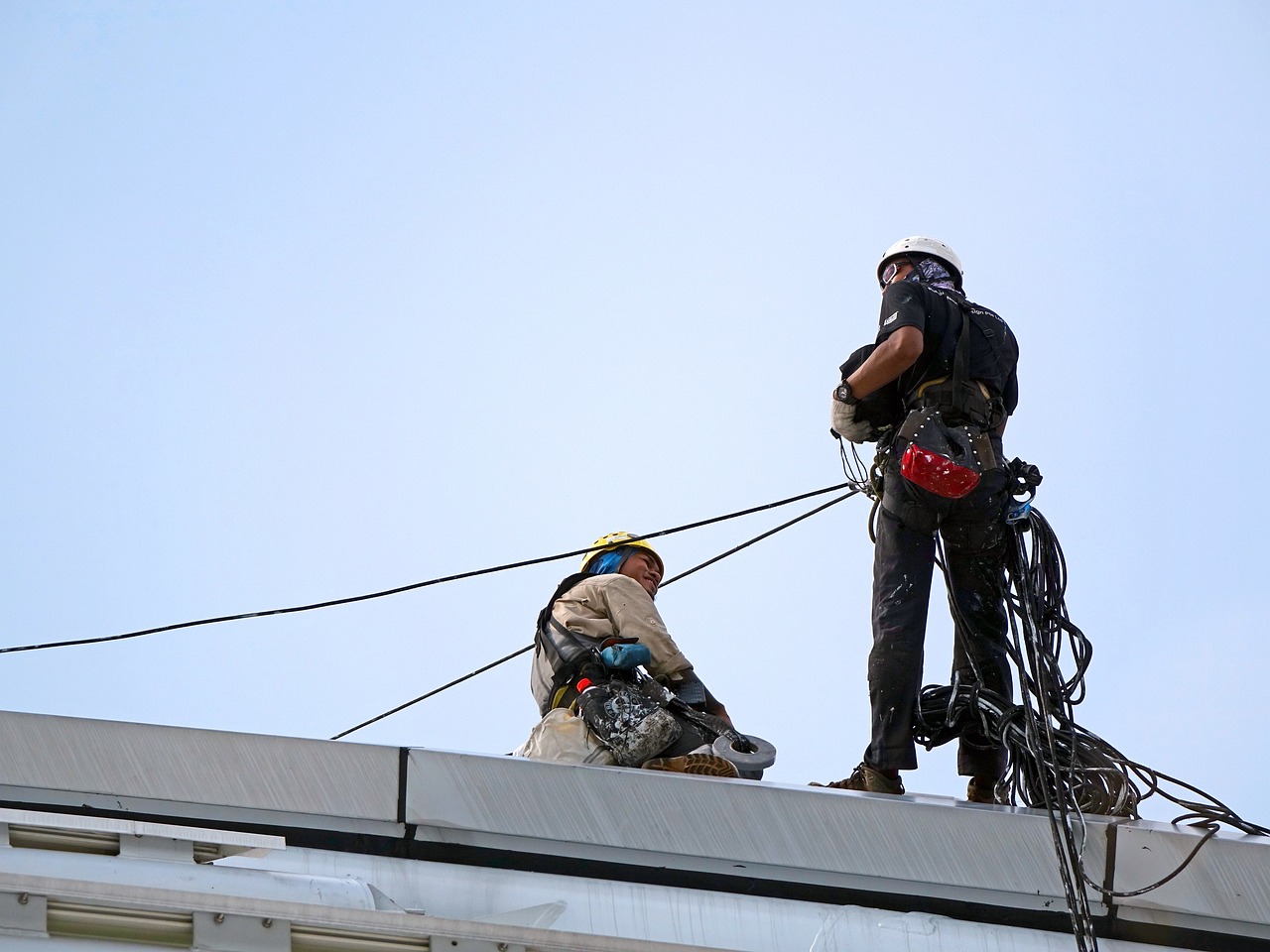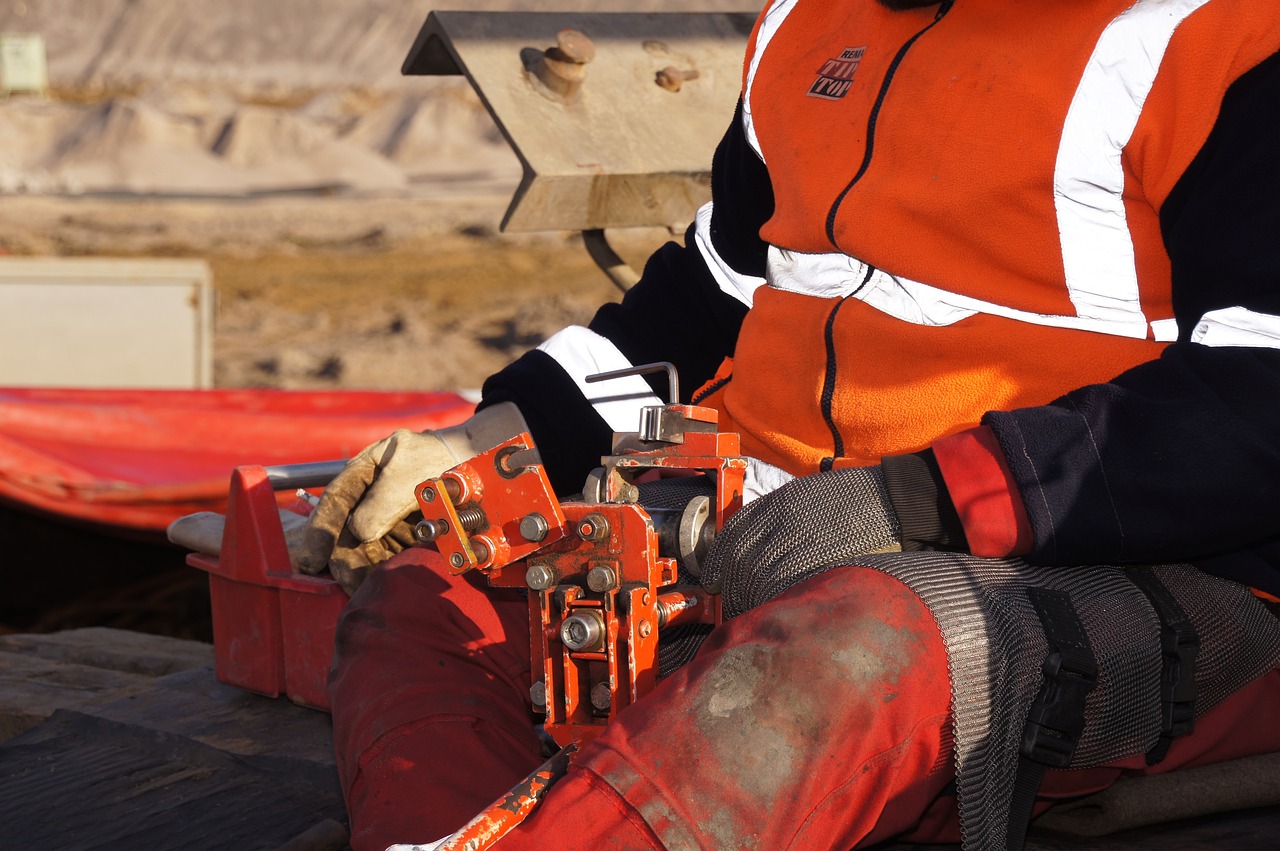A Deeper Dive into Human Behavior: An Aspect of Safety
In our fast-paced world, understanding human behavior is crucial, especially when it comes to safety. The way we act and react in different situations can significantly influence not only our own safety but also the safety of those around us. This article delves into the intricate relationship between human behavior and safety, examining various factors that shape our actions and decision-making processes in diverse environments. From psychological influences to social dynamics, we will explore how these elements intertwine to create a comprehensive view of safety.
Have you ever wondered why some people feel safe in high-risk environments while others panic? The psychological factors that contribute to our perceptions of safety are complex and multifaceted. Understanding these factors can help us design better environments and policies that promote well-being and reduce risks. For instance, individuals who have a strong sense of control over their surroundings are more likely to feel safe. This sense of control can stem from experience, knowledge, and preparation. On the flip side, those who feel powerless may perceive their environment as threatening, leading to anxiety and poor decision-making.
Analyzing how individuals assess risks and make decisions is vital for improving safety protocols and enhancing the overall safety culture in organizations. People often weigh the potential benefits against the perceived risks when making decisions. This process can be influenced by various factors, including personal experiences, societal norms, and even media portrayals of risk. For example, a person may choose to engage in a risky behavior like texting while driving if they believe the immediate reward outweighs the potential danger. By understanding these thought processes, organizations can tailor their safety training and interventions to address these misconceptions and foster a culture of safety.
Experience plays a crucial role in shaping our understanding of risk and safety. Think of it this way: just as a seasoned sailor navigates through storms with confidence, individuals with more experience in hazardous situations tend to react more appropriately. Their past encounters equip them with the knowledge and skills necessary to assess risks effectively. However, it’s important to note that experience can be a double-edged sword. Someone who has faced danger multiple times may become desensitized, leading to reckless behavior. Thus, the balance between caution and confidence is essential for maintaining safety.
Effective training programs can significantly enhance an individual's ability to respond to emergencies, fostering a culture of preparedness and resilience. Imagine a fire drill at work: while it may seem tedious, these drills are crucial for ensuring everyone knows how to react in a real emergency. Training not only provides knowledge but also builds confidence. When individuals feel prepared, they are more likely to act calmly and decisively in high-pressure situations. Organizations should prioritize regular training sessions that simulate real-life scenarios, allowing employees to practice their responses in a safe environment.
Learning from past incidents is another key aspect of improving safety practices. Each incident, whether minor or major, offers valuable lessons that can refine our approaches to safety. Organizations should conduct thorough investigations into accidents, analyzing what went wrong and how similar situations can be prevented in the future. This proactive approach not only enhances safety protocols but also fosters an environment where employees feel empowered to speak up about potential risks. By creating a culture of continuous learning, organizations can significantly reduce the likelihood of future incidents.
Social dynamics, including peer pressure and group norms, can greatly impact individual safety behaviors and decision-making processes. For example, in a workplace setting, if the majority of employees disregard safety protocols, even the most cautious individuals may feel compelled to follow suit. This phenomenon highlights the importance of fostering a strong safety culture where everyone feels responsible for upholding safety standards. By encouraging open communication and teamwork, organizations can create an environment where safety is prioritized and everyone looks out for one another.
The physical environment plays a significant role in shaping human behavior; understanding these influences can lead to better safety designs and interventions. For instance, poorly lit areas can increase the likelihood of accidents, while well-designed spaces can promote safe behaviors. Urban planners and architects must consider safety in their designs, creating environments that naturally encourage caution and awareness. Simple changes, such as adding clear signage or improving lighting, can make a significant difference in how individuals navigate their surroundings.
Creating spaces that prioritize safety through thoughtful design can minimize risks and encourage positive behaviors among users. Think about a playground designed with soft surfaces and clear visibility for parents. Such environments not only protect children but also ease parents' worries, allowing them to relax and enjoy the moment. By incorporating safety into the design process, we can create spaces that promote well-being and reduce the likelihood of accidents.
Technology can enhance safety measures, but it also introduces new risks; understanding this duality is essential for effective safety management. For example, while advanced surveillance systems can deter criminal behavior, over-reliance on technology may lead to complacency among individuals. It’s crucial to strike a balance between leveraging technology for safety and ensuring that individuals remain vigilant and engaged in their environments.
Implementing targeted behavioral interventions can promote safer practices and reduce risky behaviors in various settings, from workplaces to public spaces. These interventions often involve strategies that encourage positive behaviors through incentives or reminders. For instance, a simple reminder to wear a seatbelt can significantly increase compliance. By understanding the psychology behind behavior, organizations and communities can develop interventions that resonate with individuals, leading to lasting changes in safety practices.
- What is the importance of understanding human behavior in safety?
Understanding human behavior helps identify factors that influence safety perceptions and actions, leading to better safety designs and policies. - How can training improve safety?
Effective training enhances individuals' ability to respond to emergencies and fosters a culture of preparedness. - What role does the environment play in safety?
The physical environment influences behavior; well-designed spaces can minimize risks and promote safety. - How can technology both help and hinder safety?
While technology can enhance safety measures, over-reliance may lead to complacency.

The Psychology of Safety
Understanding the psychological factors that contribute to our perceptions of safety is crucial for creating environments that not only protect but also promote well-being. Have you ever walked into a room and instantly felt a sense of unease? That feeling is often rooted in our subconscious, where our brain processes various cues—such as lighting, layout, and even the presence of other people—to assess whether a situation is safe or not. This intuitive assessment is a blend of our past experiences, cultural background, and even biological instincts. For instance, darker environments can trigger feelings of fear, while open spaces might evoke a sense of freedom and security.
Moreover, the psychology of safety is closely tied to our emotional responses. When we feel safe, our body releases endorphins, creating a sense of calm and well-being. Conversely, when we perceive a threat, our body goes into fight-or-flight mode, releasing stress hormones that can cloud our judgment. This reaction can lead to irrational decision-making, such as ignoring safety protocols during a crisis. Therefore, understanding these psychological dynamics can help in designing environments that minimize fear and promote a sense of security.
It’s also important to consider how our perceptions of safety can be influenced by societal norms and media portrayals. For example, if we constantly see news reports of accidents or crimes, we might develop a heightened sense of vulnerability, even in safe environments. This phenomenon can create a feedback loop where increased anxiety leads to avoidance behaviors, which in turn can limit our experiences and interactions. To counteract this, communities can foster open dialogues about safety, sharing both positive and negative experiences to create a more balanced perspective.
In addition to societal influences, our individual backgrounds play a significant role in shaping our safety perceptions. Factors such as age, gender, and personal experiences can lead to varying interpretations of what constitutes a safe environment. For instance, children might perceive safety differently than adults, often relying on caregivers for cues. Similarly, someone who has experienced trauma may have a heightened sensitivity to perceived threats. Recognizing these differences is essential for tailoring safety measures that cater to diverse populations.
Ultimately, the psychology of safety is a multifaceted subject that intertwines various elements of human behavior. By delving deeper into these psychological aspects, we can develop more effective safety policies and designs that not only protect but also empower individuals. Understanding how we think, feel, and react to our environments can lead to innovations in safety protocols that resonate with the human experience.
- What factors influence our perception of safety? Our perception of safety is influenced by psychological factors, past experiences, societal norms, and environmental cues.
- How can environments be designed to enhance safety? Thoughtful design that considers lighting, layout, and user behavior can significantly enhance perceptions of safety.
- What role does training play in safety psychology? Effective training helps individuals understand risks and improves their ability to respond appropriately in emergencies.
- How can community dialogue improve safety perceptions? Open discussions about safety experiences can help balance perceptions and reduce anxiety related to safety threats.

Risk Assessment and Human Behavior
When we talk about risk assessment, it’s not just about crunching numbers or analyzing data; it’s fundamentally about understanding human behavior. Humans are inherently unpredictable, and our decisions often stem from a complex interplay of emotions, experiences, and environmental cues. This makes assessing risks a fascinating yet challenging endeavor. Have you ever noticed how some people seem to dive headfirst into risky situations, while others tiptoe around, weighing every possible outcome? This divergence can be attributed to various factors, including personal experiences, social influences, and even cognitive biases.
To truly grasp how individuals assess risks, we must first consider the role of experience. Our past encounters with danger shape our perceptions of risk. For instance, someone who has experienced a car accident may become overly cautious while driving, constantly scanning the road for potential threats. On the other hand, a person who has never faced such a situation might underestimate the dangers of speeding. This phenomenon highlights the importance of training and preparedness in shaping behavior. Effective training programs can empower individuals to respond appropriately in emergencies, enhancing their ability to assess risks accurately.
Moreover, past incidents serve as valuable lessons. Organizations that emphasize learning from their mistakes often cultivate a culture of safety. By analyzing previous accidents, companies can refine their safety practices and ensure that their employees are better equipped to handle similar situations in the future. This iterative process not only improves individual decision-making but also fosters an environment where safety becomes a shared responsibility.
Another significant aspect of risk assessment is the influence of social dynamics. Our behavior is often swayed by those around us. Have you ever found yourself taking a risk simply because your friends were doing it? This peer pressure can lead individuals to make choices that contradict their better judgment. Group norms can either promote safe behaviors or encourage risky ones, depending on the prevailing attitudes within a social circle. By understanding these social influences, organizations can implement strategies that encourage safer practices among teams.
In conclusion, the relationship between risk assessment and human behavior is intricate and multifaceted. By acknowledging the psychological factors at play, organizations can create a more robust safety culture. This understanding not only enhances individual decision-making but also strengthens the collective approach to safety. The next time you find yourself in a situation that requires assessing risk, remember that your choices are influenced by a myriad of factors, from personal experiences to social dynamics.
- What is risk assessment? Risk assessment is the process of identifying, analyzing, and evaluating risks to make informed decisions about safety.
- How does human behavior influence risk assessment? Human behavior affects how individuals perceive and respond to risks, often influenced by personal experiences and social dynamics.
- Why is training important for risk assessment? Training equips individuals with the knowledge and skills needed to assess risks effectively and respond appropriately in emergencies.
- Can social influences impact safety behavior? Yes, social dynamics such as peer pressure can significantly affect individual safety behaviors and decision-making processes.

The Role of Experience
Experience is like the seasoning in a well-cooked dish; it can transform the bland into the extraordinary. When it comes to safety, our past encounters—both good and bad—shape our understanding and reactions in potentially hazardous situations. Think about it: have you ever noticed how someone who has been in a car accident might drive more cautiously afterward? This change in behavior isn’t just a coincidence; it’s a direct result of their experience. Our brains are wired to learn from past events, and this learning influences how we assess risks in the future.
For instance, when we face a new situation, we often rely on our previous experiences to guide our decisions. If you’ve ever been in a crowded place and felt uneasy because of an unsettling incident you witnessed before, you know exactly what I mean. This learned behavior is crucial for survival, as it helps us avoid similar dangers. However, it can also lead to overestimating risks based on a single negative experience, which can skew our perception of safety in various environments.
Consider the role of experience in workplace safety. Employees who have undergone rigorous training and have had hands-on experience are generally more adept at recognizing hazards. They develop a kind of sixth sense that alerts them to potential dangers. This is why organizations invest in training programs; they know that experience enhances safety awareness.
To illustrate this point further, let’s look at a table comparing experienced workers with less experienced individuals regarding their responses to safety protocols:
| Aspect | Experienced Workers | Less Experienced Workers |
|---|---|---|
| Risk Recognition | High | Low |
| Response Time | Quick | Slower |
| Adherence to Protocols | Consistent | Inconsistent |
| Confidence Level | High | Low |
As shown in the table, experienced workers tend to have a higher awareness of risks, quicker response times, and greater adherence to safety protocols. This highlights the importance of fostering an environment where individuals can gain valuable experience through training, mentorship, and real-life practice.
Moreover, it’s essential to recognize that experience alone isn’t enough. Continuous learning and adapting to new information are equally important. Just because someone has been in a similar situation before doesn’t mean they’ll handle it the same way again. The world is constantly changing, and so are the risks we face. Therefore, encouraging a culture of ongoing education and reflection can help bridge the gap between past experiences and current safety practices.
In conclusion, experience plays a pivotal role in shaping our safety behaviors and perceptions. By understanding how past encounters influence our actions, we can better prepare ourselves and others for future challenges. It’s not just about surviving an incident; it’s about learning, adapting, and ultimately fostering a safer environment for everyone.

Training and Preparedness
When it comes to safety, training and preparedness are not just buzzwords; they are the bedrock upon which effective safety protocols are built. Imagine being in a high-pressure situation—like a fire emergency or a medical crisis. How would you react if you had never been trained? The difference between chaos and calm often hinges on the level of preparedness an individual possesses. Training equips individuals with the skills and knowledge necessary to navigate emergencies confidently. It transforms instinctive reactions into calculated responses, allowing people to act decisively rather than panic.
Moreover, preparedness isn't solely about knowing what to do; it's also about mental conditioning. Engaging in realistic training exercises can significantly reduce the anxiety associated with emergency situations. For instance, regular fire drills in a workplace not only familiarize employees with evacuation routes but also instill a sense of confidence and readiness. When individuals know what to expect, they are less likely to freeze in the moment. This is where the concept of muscle memory comes into play—practicing responses until they become second nature.
In addition, effective training programs often incorporate a variety of learning methods to cater to different learning styles. Some people may benefit from hands-on practice, while others might find visual aids or simulations more effective. A well-rounded training program might include:
- Interactive workshops
- Simulation exercises
- Online training modules
- Role-playing scenarios
By diversifying the training methods, organizations can ensure that all employees are engaged and can absorb the critical information necessary for their safety. This holistic approach not only improves individual preparedness but also fosters a culture of safety within the organization. When everyone is on the same page and understands their roles during emergencies, the collective response is far more effective.
Another crucial aspect of training is the concept of continuous improvement. Safety training should not be a one-time event but an ongoing process. Regularly scheduled refresher courses help maintain skills and awareness. They also provide opportunities to update training materials based on the latest safety protocols or technologies. Keeping the training dynamic and relevant ensures that employees remain vigilant and prepared for any situation.
In conclusion, investing in comprehensive training and preparedness programs is not just a best practice—it's a necessity. Organizations that prioritize these elements not only protect their employees but also enhance overall safety culture. The ability to respond effectively in emergencies can mean the difference between a minor incident and a major disaster. So, why wait? Start building a culture of preparedness today!
Q: What types of training are most effective for safety preparedness?
A: The most effective training programs are those that combine various methods, such as hands-on practice, simulations, and role-playing, to cater to different learning styles.
Q: How often should safety training be conducted?
A: Safety training should be an ongoing process with regular refresher courses to keep skills sharp and information up to date.
Q: Can technology play a role in safety training?
A: Absolutely! Technology can enhance safety training through online modules, virtual simulations, and interactive apps that make learning more engaging and accessible.

Past Incidents and Learning
When it comes to safety, one of the most valuable teachers is history. Past incidents serve as critical case studies, offering us a wealth of knowledge that can be harnessed to enhance our safety practices. Think about it: every accident, mishap, or near-miss is like a breadcrumb on the path to a safer future. By analyzing these breadcrumbs, we can uncover patterns, identify weaknesses in our current systems, and implement changes that prevent similar occurrences from happening again.
For instance, consider the infamous Challenger Space Shuttle disaster in 1986. This tragic event was not just a failure of technology but also a failure of communication and decision-making processes. Engineers had raised concerns about the O-rings in cold weather, but their warnings were overshadowed by management pressures and a culture that prioritized schedules over safety. Learning from this incident has led to more stringent protocols in engineering fields, emphasizing the importance of listening to frontline workers and fostering a culture where safety concerns can be openly discussed.
Furthermore, organizations can benefit from conducting thorough post-incident analyses. These analyses often involve a detailed examination of what went wrong, who was involved, and how the situation escalated. By documenting these findings, companies can create a repository of knowledge that informs future training and safety measures. For example, a manufacturing plant might analyze a workplace injury to determine whether it was due to inadequate training, faulty equipment, or environmental hazards. Such insights can lead to improved training programs, better equipment maintenance schedules, and even redesigning workspaces to minimize risks.
In addition, learning from past incidents isn't just about avoiding the same mistakes; it's also about fostering a culture of continuous improvement. When organizations openly share lessons learned, they create an environment where safety becomes a shared responsibility. Employees are more likely to engage in safe practices when they understand the real-life implications of their actions. This can be achieved through regular safety meetings, workshops, and even informal discussions where team members can share their experiences and insights.
Moreover, it's essential to recognize that the landscape of safety is continually evolving. New technologies, regulations, and societal norms can change the way we perceive and manage risks. Therefore, organizations must remain vigilant and adaptable, continuously revisiting their safety protocols in light of new information and past learnings. By doing so, they not only protect their employees but also enhance their overall organizational resilience.
In conclusion, the lessons learned from past incidents are invaluable assets in the quest for safety. They provide us with a roadmap for improvement, guiding our actions and decisions in ways that can prevent future tragedies. By fostering a culture of learning and adaptation, we can ensure that the mistakes of the past do not become the tragedies of the future.
- Why is learning from past incidents important for safety?
Learning from past incidents helps organizations identify weaknesses in their safety protocols, fostering a culture of continuous improvement and preventing similar occurrences. - How can organizations effectively analyze past incidents?
Organizations can conduct thorough post-incident analyses, documenting findings and sharing lessons learned with all employees to enhance safety measures. - What role does communication play in preventing future incidents?
Effective communication ensures that safety concerns are heard and addressed, creating an environment where employees feel empowered to prioritize safety.

Social Influences on Safety Behavior
Have you ever noticed how your friends’ actions can sway your own? It’s fascinating how social influences play a pivotal role in shaping our safety behaviors. Whether we’re at work, school, or even at home, the people around us can significantly impact our decisions regarding safety. Think about it: if you see someone ignoring safety protocols, you might be tempted to do the same, right? This phenomenon is often driven by peer pressure and the desire to fit in, which can lead to risky behaviors that compromise our safety.
Social norms are another critical factor. When safety practices are embedded in a group’s culture, they can either promote or hinder safe behavior. For instance, in a workplace where safety is prioritized and regularly discussed, employees are more likely to adopt those practices. On the flip side, in environments where safety is overlooked, individuals may feel less inclined to adhere to safety protocols. This creates a ripple effect, where one person’s behavior can influence the entire group, leading to either a culture of safety or a culture of risk.
Moreover, the role of leadership cannot be overstated. Leaders who model safe behaviors and actively promote safety can inspire others to follow suit. When employees see their supervisors taking safety seriously—wearing personal protective equipment, conducting safety briefings, and engaging in safety drills—they are more likely to internalize those values. It’s like a domino effect; one safe action leads to another, creating a safer environment for everyone.
But social influences don’t just stop at the workplace. They extend to our communities and even our families. Consider how parents teach their children about safety. A parent who emphasizes the importance of wearing seatbelts or helmets is instilling values that can last a lifetime. Similarly, community initiatives that promote safety awareness can create a collective mindset that encourages safe behaviors among residents. For example, neighborhood watch programs or local safety workshops can empower individuals to take responsibility for their own safety and the safety of others.
In conclusion, understanding the social influences on safety behavior is crucial for developing effective safety strategies. By fostering environments that encourage open discussions about safety, promoting positive role models, and creating supportive community initiatives, we can significantly enhance safety practices. After all, safety is not just an individual responsibility; it’s a collective one. So, let’s work together to create a culture of safety that benefits everyone.
- What are social influences on safety behavior? Social influences refer to the impact that individuals and groups have on each other’s decisions and actions related to safety.
- How can peer pressure affect safety? Peer pressure can lead individuals to conform to unsafe practices if they see their peers engaging in risky behaviors.
- What role do leaders play in promoting safety? Leaders set the tone for safety culture; their actions and attitudes can inspire others to prioritize safety.
- How can communities promote safety? Communities can organize safety initiatives, workshops, and campaigns that encourage residents to adopt safe practices.

Environmental Factors Affecting Safety
When we think about safety, it's easy to focus solely on human behavior or individual choices. However, the physical environment plays a crucial role in shaping our actions and decisions. Imagine walking into a dimly lit room with slippery floors; your instincts will likely tell you to tread carefully. This reaction is not just a personal choice but a response influenced by the surrounding environment. Understanding these environmental factors is essential for creating safer spaces where people can thrive without fear of injury or accidents.
One of the most significant aspects of the environment affecting safety is design. The layout of a space, the materials used, and even the color scheme can impact how safe we feel. For instance, well-lit areas tend to promote a sense of security, while poorly lit places can lead to anxiety and hesitance. This is why urban planners and architects are increasingly focusing on designs that prioritize safety. They understand that a well-designed environment can not only prevent accidents but also encourage positive behaviors among its users.
Moreover, the presence of hazards in the environment cannot be overlooked. These can range from physical obstacles like uneven pavement to more abstract threats such as noise pollution. Each of these factors can influence how individuals behave. For example, if a workplace is cluttered with equipment and debris, employees may navigate the area more cautiously, potentially slowing down productivity. This highlights the importance of regular environmental assessments to identify and mitigate risks.
In addition to design and hazards, social dynamics within an environment can also affect safety. The way people interact in a given space can either promote or hinder safe behavior. For instance, if a group of friends is engaging in risky behavior, such as climbing on a ledge for a photo, others may feel pressured to join in, despite the potential dangers involved. This social influence emphasizes the need for fostering a culture of safety, where individuals feel empowered to make safe choices regardless of peer pressure.
To illustrate the relationship between environmental factors and safety, consider the following table, which outlines various elements and their potential impacts:
| Environmental Factor | Impact on Safety |
|---|---|
| Lighting | Improves visibility and reduces anxiety |
| Clutter | Increases the risk of accidents and injuries |
| Noise Levels | Can distract and impair decision-making |
| Layout | Affects movement patterns and accessibility |
In conclusion, the interplay between environmental factors and safety is complex yet vital to understand. By acknowledging how our surroundings influence our behavior, we can design better spaces that not only protect individuals but also promote a culture of safety. Whether it's through thoughtful design, regular assessments, or fostering positive social dynamics, the goal remains the same: creating environments where safety is a priority, and individuals can feel secure.
- What are the key environmental factors that affect safety? Key factors include lighting, layout, noise levels, and the presence of hazards.
- How can design improve safety in public spaces? Thoughtful design can enhance visibility, reduce clutter, and promote safe behaviors among users.
- What role does social influence play in safety behavior? Social dynamics can encourage or discourage safe practices, often impacting individual decision-making.

Designing Safe Spaces
When it comes to , the goal is to create environments that not only protect individuals but also foster a sense of security and well-being. Imagine walking into a room where every corner has been thoughtfully considered, where the lighting is just right, and where the layout encourages positive interactions. This isn’t just about aesthetics; it's about understanding how the physical space influences human behavior. The way we design our surroundings can either promote safety or contribute to risks.
To effectively design safe spaces, we must consider several key elements:
- Visibility: Ensuring that spaces are well-lit and open can deter potential hazards and promote a sense of safety.
- Accessibility: Spaces should be designed to accommodate everyone, including those with disabilities, ensuring that safety features are accessible to all.
- Materials: The choice of materials can impact safety; for instance, using non-slip flooring can prevent accidents in high-traffic areas.
- Clear Signage: Effective signage can guide individuals and inform them of safety protocols, enhancing their awareness of potential risks.
Additionally, it's essential to involve the community in the design process. When people feel a sense of ownership over their environment, they are more likely to take responsibility for maintaining safety. This can be achieved through workshops or discussions where community members can voice their concerns and suggestions. By incorporating feedback, designers can create spaces that truly meet the needs of their users.
Moreover, consider the psychological aspects of space design. For example, incorporating natural elements such as plants and natural light can significantly reduce stress and promote a feeling of safety. Research shows that environments that mimic nature can enhance our mood and improve our overall sense of well-being. This is why parks and green spaces are often seen as safe havens in urban settings.
Another vital factor in designing safe spaces is flexibility. Spaces should be adaptable to different situations and needs. For example, a community center that can be reconfigured for various events—from emergency shelters to social gatherings—demonstrates a proactive approach to safety. Flexibility in design allows spaces to serve multiple purposes, thereby enhancing their utility and safety.
In conclusion, designing safe spaces is a multifaceted approach that requires careful consideration of physical, psychological, and social factors. By prioritizing visibility, accessibility, and community involvement, we can create environments that not only protect but also empower individuals to feel secure and engaged. As we move forward, let’s challenge ourselves to think beyond conventional designs and envision spaces that truly cater to the safety and well-being of all.
Q: What are the key elements of a safe space?
A: Key elements include visibility, accessibility, appropriate materials, and clear signage. These factors help ensure that individuals feel safe and secure in their environments.
Q: How can community involvement improve safety in space design?
A: Involving the community allows for diverse perspectives and needs to be considered, leading to designs that are more effective and widely accepted. People are more likely to maintain safety when they feel a sense of ownership.
Q: Why is flexibility important in designing safe spaces?
A: Flexibility allows spaces to adapt to various needs and situations, making them more functional and enhancing their safety. For example, a space that can serve as both a community center and an emergency shelter can be invaluable during crises.

Impact of Technology on Safety
In today's fast-paced world, the is undeniable. From smart home devices to advanced workplace safety systems, technology has revolutionized how we approach safety measures. But how does this transformation affect our daily lives? Imagine a world where a simple app on your smartphone can alert you to potential hazards in real-time or where wearable devices monitor your health metrics to prevent accidents before they happen. This is the power of technology in enhancing safety.
One of the most significant advancements is the integration of artificial intelligence (AI) in safety protocols. AI systems can analyze vast amounts of data to identify patterns that humans might overlook. For example, in industrial settings, AI can predict machinery failures before they occur, allowing for preventive maintenance that keeps workers safe and reduces downtime. This proactive approach not only enhances safety but also boosts productivity.
Moreover, technology has transformed emergency response systems. Consider the impact of smart alarms and notification systems. These tools can instantly alert individuals about fire, gas leaks, or other emergencies, significantly reducing response times. In critical situations, every second counts, and technology can make the difference between life and death.
However, it's essential to recognize that with great power comes great responsibility. While technology can enhance safety, it also introduces new risks. For instance, the reliance on digital systems can lead to vulnerabilities, such as cyberattacks that compromise safety equipment. A well-known example is the hacking of a hospital's network, which halted critical medical equipment, putting patients at risk. This duality of technology highlights the need for comprehensive safety strategies that include both advanced tools and robust cybersecurity measures.
Furthermore, as we embrace technology, we must also consider its impact on human behavior. For instance, the convenience of automation might lead individuals to become complacent, relying too heavily on devices rather than remaining vigilant. This behavioral shift can inadvertently create safety gaps. Therefore, it’s crucial to strike a balance between leveraging technology and maintaining an active role in personal and collective safety.
To fully harness the benefits of technology in safety, organizations should invest in training programs that educate employees about both the tools available and the potential risks involved. This training should not only cover how to use technology effectively but also emphasize the importance of human oversight and critical thinking in safety practices.
In conclusion, the impact of technology on safety is profound and multifaceted. As we continue to innovate, we must remain aware of both the advantages and challenges that come with it. By embracing technology while fostering a culture of safety awareness, we can create environments that not only protect but also empower individuals to take charge of their safety.
- How does technology improve workplace safety? Technology enhances workplace safety through predictive analytics, real-time alerts, and automation of hazardous tasks, reducing the likelihood of accidents.
- What are the risks associated with technology in safety? Risks include potential cyberattacks, over-reliance on automated systems, and the possibility of data breaches that could compromise safety protocols.
- Can training help mitigate the risks of technology in safety? Absolutely! Comprehensive training ensures that employees understand how to use technology effectively while remaining vigilant and aware of potential risks.

Behavioral Interventions for Safety
When it comes to ensuring safety in various environments, behavioral interventions can be a game changer. These interventions are designed to influence the behaviors of individuals, promoting safer practices and reducing the likelihood of risky actions. Imagine a workplace where every employee is not only aware of safety protocols but also actively engaged in following them. This is the power of behavioral interventions. They can transform the culture of an organization, creating an atmosphere where safety is prioritized and everyone feels responsible for maintaining it.
One of the most effective methods to implement behavioral interventions is through positive reinforcement. This approach rewards individuals for demonstrating safe behaviors, thereby encouraging them to repeat those actions. For example, a company might introduce a reward system where employees earn points for reporting hazards or following safety protocols. These points could then be redeemed for various incentives, creating a win-win situation. Not only does this promote safety, but it also boosts morale and fosters teamwork.
Another critical aspect of behavioral interventions is awareness training. This involves educating individuals about the potential risks they face in their environments and the importance of adhering to safety measures. By increasing awareness, individuals are more likely to recognize hazardous situations and act accordingly. For instance, training sessions that simulate emergency scenarios can be incredibly effective. Participants can practice their responses in a controlled setting, which not only prepares them for real-life situations but also ingrains safe behaviors through repetition.
Moreover, peer influence plays a significant role in shaping behaviors. When team members hold each other accountable for safety practices, the entire group benefits. This can be achieved through team-based interventions where employees work together to identify safety concerns and develop solutions. Such collaborative efforts not only enhance safety but also strengthen relationships among team members, fostering a sense of community and shared responsibility.
To further illustrate the impact of behavioral interventions, consider the following table that highlights various strategies and their outcomes:
| Intervention Strategy | Description | Expected Outcome |
|---|---|---|
| Positive Reinforcement | Rewarding safe behaviors to encourage repetition. | Increased compliance with safety protocols. |
| Awareness Training | Educating individuals about risks and safety measures. | Enhanced recognition of hazards and improved response. |
| Peer Accountability | Encouraging team members to support each other in safety practices. | Stronger safety culture and reduced incidents. |
Implementing these interventions requires a commitment from leadership and a willingness to adapt existing practices. It’s essential to create an environment where employees feel comfortable discussing safety concerns without fear of repercussions. This openness can lead to valuable insights and improvements in safety protocols. Remember, safety is not just about following rules; it’s about cultivating a mindset that prioritizes well-being for everyone.
As we look to the future, the integration of technology in safety interventions will likely take center stage. For instance, wearable devices that monitor environmental conditions can provide real-time data, alerting individuals to potential hazards before they become an issue. This fusion of behavioral science and technology can create a proactive safety culture, where interventions are tailored to the specific needs of individuals and environments.
- What are behavioral interventions? Behavioral interventions are strategies designed to change individuals' behaviors, promoting safer practices in various environments.
- How can positive reinforcement help improve safety? By rewarding safe behaviors, positive reinforcement encourages individuals to continue following safety protocols, thus enhancing overall safety culture.
- Why is awareness training important? Awareness training educates individuals about potential risks, making them more likely to recognize hazards and react appropriately.
- How does peer influence affect safety behaviors? Peer accountability encourages team members to support each other in adhering to safety practices, creating a stronger safety culture.
Frequently Asked Questions
- What is the relationship between human behavior and safety?
Human behavior is intricately linked to safety as our actions and decisions directly impact the risks we face. By understanding the psychological factors that influence our perceptions of safety, we can create environments that encourage safer choices and reduce hazards.
- How do psychological factors affect our perception of safety?
Psychological factors such as fear, past experiences, and social influences play a significant role in how we perceive safety. For instance, if someone has had a negative experience in a certain environment, their perception of safety in that context may be compromised, leading to heightened anxiety and risk-averse behavior.
- What role does experience play in risk assessment?
Experience shapes our understanding of risks and influences our reactions in potentially dangerous situations. Individuals who have undergone training or have faced hazardous scenarios before are often better equipped to assess risks accurately and respond effectively.
- How can training improve safety preparedness?
Effective training programs equip individuals with the skills and knowledge necessary to respond to emergencies. By fostering a culture of preparedness, organizations can enhance resilience and reduce the likelihood of accidents or injuries.
- Why is learning from past incidents crucial for safety?
Learning from past incidents allows individuals and organizations to refine their safety practices. By analyzing what went wrong, we can implement changes that prevent similar occurrences in the future, ultimately enhancing overall safety culture.
- How do social influences impact safety behavior?
Social dynamics, including peer pressure and group norms, significantly affect individual safety behaviors. When safety practices are normalized within a group, individuals are more likely to adopt those behaviors, highlighting the importance of a supportive safety culture.
- What environmental factors should be considered in safety design?
The physical environment can either promote or hinder safety. Thoughtful design that prioritizes safety features—such as clear signage, adequate lighting, and open spaces—can minimize risks and encourage positive behaviors among users.
- How does technology influence safety measures?
Technology can enhance safety through advanced monitoring and alert systems, but it also introduces new risks, such as cyber threats. Understanding this duality is essential for effective safety management, ensuring that technological advancements contribute positively to safety outcomes.
- What are behavioral interventions for safety?
Behavioral interventions are targeted strategies designed to promote safer practices and reduce risky behaviors. These can range from educational programs to incentive-based systems that encourage individuals to prioritize safety in various settings, including workplaces and public spaces.



















